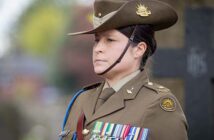VIDEO: LOCAL history enthusiast and animation expert Mark Collins has produced a superb ‘3D’ video that reveals what historic Orford Hall looked like in the early 1900s.
Now the site of Orford Park the history of Orford Hall is fascinating and now after many hours spent referencing and scrutinising old maps and images, Mark has provided a view of what the hall looked like prior to demolition in 1935.
Originally a timber and plaster building with ornate chimneys and a thatched roof, it was built for the Le Norris family in 1232. After the Norris family left, the Hall was acquired in 1595 by Thomas Tildesley, who rebuilt it in a Jacobean style.
Thomas Blackburne purchased the Hall in 1638 and during the Blackburne family’s tenure it became known for its outstanding collection of rare plants, trees and unusual animals. The hothouse in its grounds was said to be the first in the country to grow pineapples, coffee, tea and sugarcane and it also had an Orangery where citrus fruits were cultivated. The Hall was said to be a true ‘botanical’ garden with its plants assembled just as much for their scientific study as their beauty.
The hall itself was largely rebuilt around 1716 while John Blackburne (1693 to 1786) created its magnificent parklands.
The Blackburne family had prospered by their indirect involvement in the notorious slave trade with John Blackburne’s son investing in Salt House Dock at Liverpool, a major port for slavery.
In its later years, the hall was leased to Lucy Hornby (whose grandson Edmund became the first MP for Warrington) and its final residents were William Beamont, the first mayor of Warrington, and his wife, Letitia.
In 1916, thanks largely to the efforts of Alderman Arthur Bennett, the Blackburne family gifted the hall and its surrounding 18 acres of grounds to the town as a War Memorial and public park to honour “the valour of the lads of Warrington in the Great War.”
Sadly, the condition of the Hall deteriorated to the point where it was not financially viable to restore which eventually led to its demolition in 1935. The hall’s grounds however are still very much in use and attract an estimated 1.2m visitors a year as part of the town’s Orford Jubilee Neighbourhood Hub complex.
Warrington History Society would like to thank Mark for bringing the Hall back to life and for allowing the society to share his work with the people of Warrington.
The hall itself was largely rebuilt around 1716 while John Blackburne (1693 to 1786) created its magnificent parklands.
The Blackburne family had prospered by their indirect involvement in the notorious slave trade with John Blackburne’s son investing in Salt House Dock at Liverpool, a major port for slavery.
*Thanks to Warrington History Society for background information.



